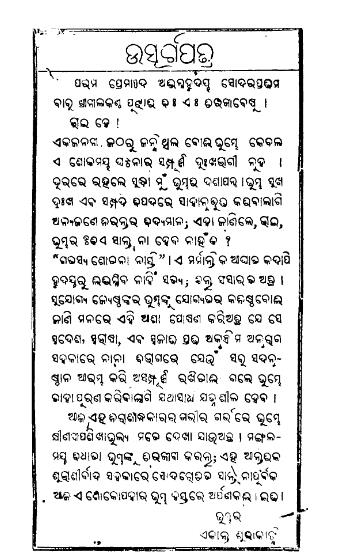Bandhura Bilapa, published in 1903, stands as a significant work in the landscape of Odia literature, crafted by the renowned poet Balunkeswar Misra. This poignant piece beautifully captures the essence of longing and the complexities of human emotions, reflecting the cultural tapestry of Odisha and the soul of its people.
Balunkeswar Misra, a luminary of the early 20th century, was not only a poet but also a visionary who used his writing to express the socio-cultural dynamics of his time. In “Bandhura Bilapa,” he poignantly conveys the themes of love, separation, and nostalgia, which are universal yet deeply rooted in the Odia context.
The title Bandhura Bilapa, translating to The Lament of a Friend, sets the tone for a narrative filled with yearning. The poet crafts a poignant exploration of friendship and connection, showcasing how separation amplifies emotions. Misra’s verses resonate with those who have experienced the bittersweet pangs of parting, making the poem relatable across generations.
The imagery throughout the work is rich and evocative. Misra’s use of nature—like the setting sun, fluttering leaves, and distant mountains—serves as a backdrop to human emotions, illustrating how interconnected we are with our surroundings. The poem becomes a canvas where feelings of melancholy find expression through the beauty of the natural world.
Misra’s linguistic prowess is evident in Bandhura Bilapa. The poem is characterized by its musicality and rhythmic flow, reflecting the traditional Odia poetic forms. His choice of words carries a lyrical quality, drawing readers into a realm where each line feels like a soft whisper of longing. The use of metaphors and similes enriches the text, layering it with deeper meanings and inviting readers to interpret it from various perspectives.
The poet’s ability to encapsulate deep feelings in simple yet profound language is a hallmark of his style. This accessibility, paired with the emotional weight of the themes, ensures that the poem resonates with a broad audience, transcending time and context.
Bandhura Bilapa emerged during a period of artistic and cultural renaissance in Odisha. The late 19th and early 20th centuries saw a revival of interest in Odia literature and folklore, with poets like Misra leading the charge. His work contributes significantly to this educational pivot, using poetry as a means to reflect the cultural identity of Odisha.
The sentiments expressed in Bandhura Bilapa can also be viewed as indicative of broader societal changes. The themes of love and separation mirror the transformations in personal relationships and societal ties in the backdrop of modernity and tradition. Misra’s poetry encapsulates the collective consciousness of a society grappling with change while trying to hold onto its roots.
Books Info
| Books name | Bandhura Bilapa / ବନ୍ଧୁର ବିଳାପ |
| Author | Balunkeswar Misra |
| No Of pages | 10 |
| Publisher | NA |
| Publication | 1903 |
| Printed At | NA |
| Distributor | NA |

